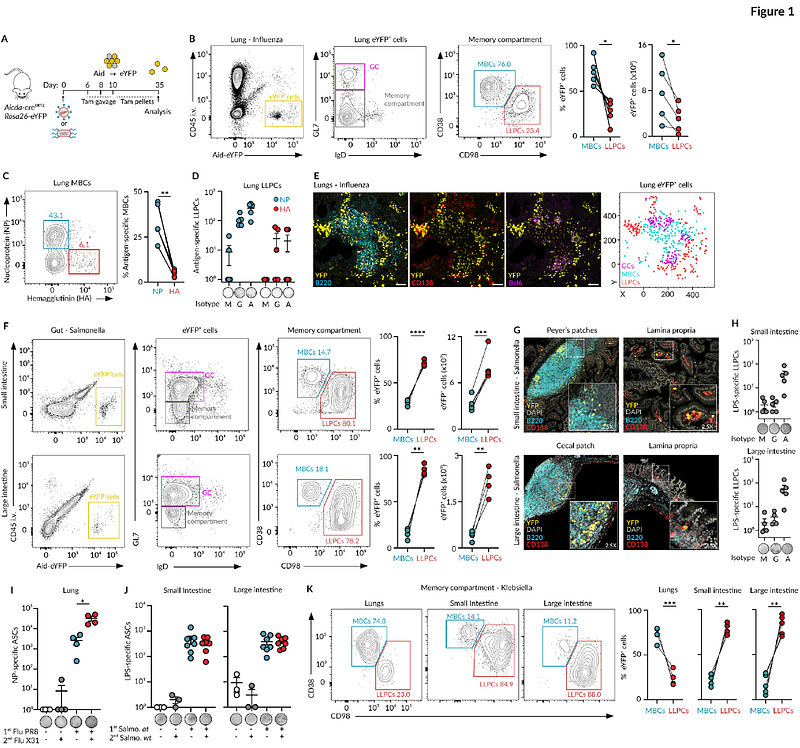Mucosal B cell memory selection integrates tissue-specific microbial cues via the IgA BCR

Mucosal B cell memory selection integrates tissue-specific microbial cues via the IgA BCR
Holgado, M. P.; Origlio, S.; Bertoia, L.; Moussa, M.; Trivedi, A.; Fiore, F.; Zarubica, A.; Slack, E.; Linterman, M. A.; Cogne, M.; Gregoire, C.; GAYA, M.
AbstractB cells engender long-lived plasma cells (LLPCs) and memory B cells (MBCs) to combat recurrent pathogens. While B cell receptor (BCR) affinity dictates fate decisions in clonally-restricted set-ups, the driving factors in more complex systems remain unknown. Here, we show that memory selection during mucosal infection is imprinted by inherent cues from barrier tissues: lungs skew selection towards MBCs while the gut favors LLPC entry, even in response to the same pathogen. This divergence is linked to differential BCR isotype usage across barrier tissues rather than to affinity. In the gut, the commensal-induced TGF-{beta}-rich milieu promotes B cell class-switching to IgA. Consequently, the IgA BCR bias selection towards LLPCs, a process that is counteracted by its cytosolic tail domain. Overall, mucosal B cell selection integrates tissue-specific microbial cues by strongly relying on BCR isotype usage rather than affinity, with implications for nasal and oral vaccine development.